The children of Cynthia Nixon, Samantha Bee and Louis C.K. got into this popular public middle school, while hundreds of others are shut out every year.
The Center School has operated like a fiefdom on the Upper West Side, enrolling just 234 students in grades 5 to 8 with a mysterious admissions process that pledges diversity in race and ability but has resulted in a school that is mostly white, affluent and high-performing.
As the Upper West Side’s District 3 struggles to bring “academic diversity” and desegregation to the area, The Center School stands out as an island of privilege.
It would be exempt from the Department of Education proposal to require middle schools in District 3 give 25 percent of admissions priority to students scoring at the lowest two levels on state English and math tests.
The school’s loophole lies in the fact that it begins admitting students in fifth grade, not sixth, as the district’s other schools do. Because it is exempt from the city’s admissions process, the school can cherry-pick kids who’ve scored higher on standardized tests, resulting in less academic diversity.
“It will not be a part of this particular discussion, but the superintendent is working with The Center School to bring it online with the rest of the district at some point in the future,” said Kim Watkins, president of the District 3 Community Education Council.
The West 84th Street school is one of just eight middle schools in the city that has its own admissions policy, but most of the others have clear guidelines for entry, such as a student’s performing-arts talent or a lottery system.
Not The Center School. The process there is a mystery to the students who apply in fourth grade and are interviewed by both a current student and a teacher. Some 350 kids vie for 55 spots, and they can live outside of the district.
“They have their completely own independent rubric which they don’t have to release or justify,” said Alina Adams, an education consultant. “Nobody knows how kids get into that school.”
One mother said that during an admissions interview, her daughter was asked what her parents did for a living.
“They ‘never received’ our application materials. Turns out the exact same excuse was used on another family we know,” it read.Another parent cried foul over the admissions process in a comment posted on Insideschools.org.
Those who do win a coveted spot love it.
“The kids, I think, have a lot of freedom, and it ends up being an incredible happy place where your kids are learning so much all the time. I don’t know what they do, but their system is incredible,” said Karen Haberberg, parent of a fifth-grader.
The school opened in 1982 to lure kids who were fleeing to private schools.
“We decided that nothing really worked, so we decided to start from scratch,” Elaine Schwartz, the school’s 83-year-old co-founder and its current principal, said in a 2013 interview.
Classes are small, arts are a focus. Students learn Latin and attend classes with those in other grades. Standardized testing is de-emphasized.
Schwartz is well connected at City Hall, according to a former parent.
“She’s been able to kind of run this school the way she’s wanted to,” the parent said.
“I think it’s a fantastic place, but I wished it were much more integrated,” the parent said. “I wish they took many more low-income kids and kids who weren’t performing well on the tests.”
Schwartz refused to comment.
The Center School has become increasingly white and affluent in the last decade. In 2008, parents — including Nixon — argued that moving the school from its location within PS 199 would result in less diversity. At the time, it was 55 percent white, 23 percent black and 13 percent Hispanic with a “poverty rate” of 38 percent.
“It is one of the whitest schools in the district, and it is increasingly white and increasingly affluent and ousting The Center School means a de facto segregated building,” the ex-“Sex and the City” star and current gubernatorial candidate said in a hearing at the time.
The Center School moved anyway to West 84th Street, where it shares space with PS 9.
This year, the school’s population is 58 percent white, 12 percent black, 18 percent Hispanic, 6 percent Asian and 6 percent other. Twelve percent of students qualified for free lunch.
‘Academic diversity’ plan for NYC schools opens racial wounds
Susan Edelman and Melissa Klein, NYPOST April 28, 2018
 |
| NYC Chancellor Richard Carranza
Matthew McDermott |
School officials call it “academic diversity,” but a well-meaning plan to equalize access to good schools has sparked an ugly racial debate that pits white, affluent parents against poor blacks and Latinos.
The recently announced
proposal in District 3 — which covers the West Side of Manhattan from 59th Street to 122nd Street — would give bottom-scoring elementary-school students “priority” for admission to most middle schools. The district’s schools are sharply divided along racial and socioeconomic lines.
High-performing middle schools — usually with a white, middle- or upper-class majority — would have to reserve up to 25 percent of their seats for students who score at the lowest 2 of 4 levels on state math and English tests. That means some students with high test scores would be shut out of their preferred schools and possibly steered to lower-performing schools which enroll more blacks and Hispanics.
It’s the first proposal of its kind in New York City, but the social experiment paves the way to expand to other schools and districts.
And that threatens to raise racial tensions akin to explosive school battles in Boston, Detroit and LA, said David Bloomfield, a Brooklyn College and CUNY Graduate Center education professor.
“Without strong leadership, this strategy may divide the city based on racial politics — those who favor desegregation against those who don’t,” Bloomfield said.
New York City schools are the nation’s most segregated by race and class, a 2014 UCLA study found.
The proposal would affect current 4th graders who will enter the 5th grade in September, and apply to middle school in December. The DOE hopes to approve the plan by June.
The controversy erupted at a recent community meeting, videotaped by NY1, when one mother at high-ranked PS 199 on the Upper West Side angrily asked what she should tell an 11-year-old who “worked [their] butt off” but was shut out of the best school. “Life sucks!”
Mona Davids, president of the NYC Parents Union, blasted “progressive limousine liberals” at the popular school, where 62.2 percent of kids are white and 14.9 percent are Asian.
“It’s racism because they know the students who are doing poorly and condemned to failing schools are black and Latino. They don’t want those students in their lily-white schools,” she said.
Some parents at poor-performing schools in the district hailed the diversity plan, which still requires DOE approval.
At the struggling PS 149 Sojourner Truth in Harlem, just 8 percent of students got a 3 or 4 — passing or higher — on the state English test last year, and only 1 percent hit those scores on the math test. The school is 90 percent black and Hispanic.
Jameelah Ricks, whose son is a second-grader at the school, said low test scores don’t mean a child can’t improve.
Parents who oppose the plan stereotype low-income minorities and worry they will “flood” their elite schools, she told The Post.
“We’re all not ghetto, project, welfare recipients. I’m educated. I’m actually in my second year in law school. I’m a senior corporate paralegal,” Ricks said.
But opposing parents at high-performing schools say the plan turns the merit system on its head.
“I think it’s very crooked,” said Aya Goshen, whose son is in grade 4 at PS 199 on West 70th Street. “You tell your kid that he needs to do his best on the test to get into a good school and it turns out he’d better get a 2, and he might get into a better school. The system is motivating kids the wrong way.”
The diversity plan, if approved, will affect Goshen’s son when he applies to middle school,
“I am very worried,” she said. “Diversity is good for our kids but the environment needs to supply the kids that are struggling with tools so they won’t disturb the kids that are not. Unless they do that, the kids who have 3s and 4s are going to suffer.”
DOE officials did not address in detail how schools will handle the mix of students at sharply different academic levels, or how they will improve the poor-performing schools where many kids will still be stuck.
Enrollment in Harlem schools has dropped because of competition from charters and other district schools, said Dennis Morgan, a member of the District 3 Community Education Council.
“I’m concerned that this is going to exacerbate problems with enrollment,” he said of the diversity plan.
Admission to elementary schools is normally determined by residential zones. But after grade 5, students can apply to middle schools in their district. Students rank their preferences, and can list up to 12 choices.
Some schools also rank the students they want. Then, students are matched to schools by computer algorithms that typically give most students their first or second choice, experts said.
In another citywide change under the proposal, schools will not see how students rank them. So schools could no longer favor kids who rank them No. 1.
Currently, some popular schools cherry-pick the highest-scoring kids. In District 3, for instance, MS 54 Booker T. Washington in Morningside Heights enrolls 80 percent of students who score a 3 or 4 on the English test and 85 percent who score a 3 or 4 in math. The school is 62 percent white, 11.5 percent Asian, 12.7 percent Hispanic and 7.7 percent black.
Graduates move on to the city’s top high schools, including Bronx HS of Science and Stuyvesant HS.
Under the District 3 plan, 17 middle schools would offer up to 10 percent of seats to students who score an average 1 on their fourth-grade exams and up to 15 percent to those who score an average 2.
A suggestion to limit the percentages of kids with 3 and 4 scores at each school was nixed, for now, as “too drastic.”
Based on 1,815 applications last year, the DOE estimates that, if the diversity plan was in effect, 118 families would get into a school higher on their wish list, while 56 would get a less-desired placement — or none of their choices.
“Because there’s a fixed number of seats in the best schools, somebody has to lose,” said Aaron Pallas, an education professor at Columbia University’s Teachers College. “It’s the fear of white, middle-class parents, whose children have done well in school, that they will be losers.”
Clara Hemphill, editor of the local education site Insideschools.org, said the city should increase the number of seats at popular, high-performing schools to expand opportunities for all.
Some parents admit that privilege must not determine opportunity.
“There are some really good middle schools in New York City and it shouldn’t just be rich kids who get to go to them,” said Josh Auerbach, whose daughter is a 5th-grader at PS 199.
But he added that some parents are upset because “school integration is scary. Even when it’s the right answer, it’s scary.”
Other diversity efforts across the city are also underway.
In Brooklyn’s District 15, which takes in Park Slope, Sunset Park and Red Hook, a consultant was hired to help shape a plan for its middle schools, which have an uneven racial and economic distribution.
Carranza: Schools aren’t meeting minority students’ needs
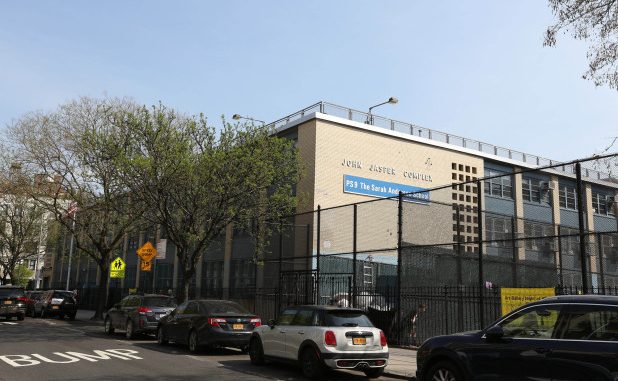

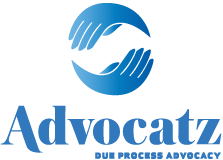
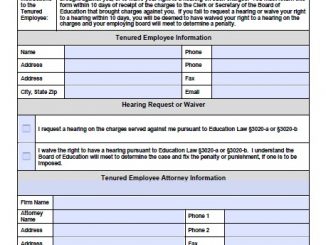
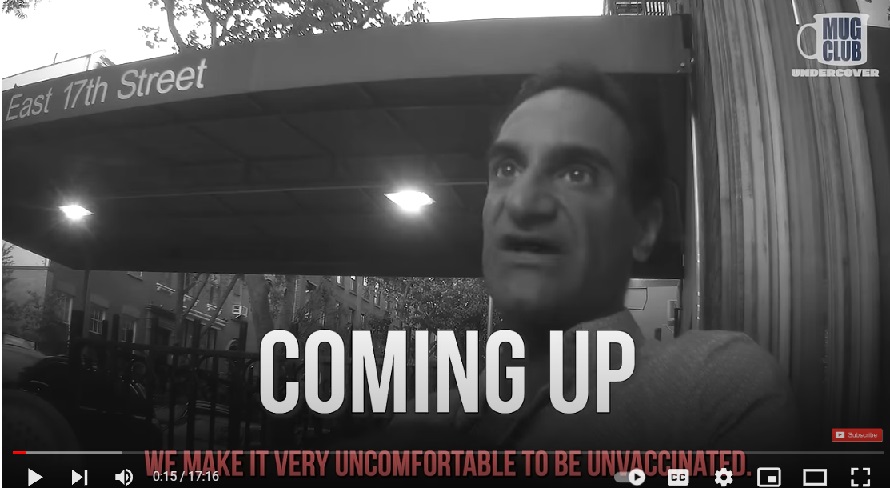
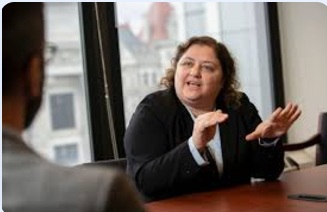
Be the first to comment